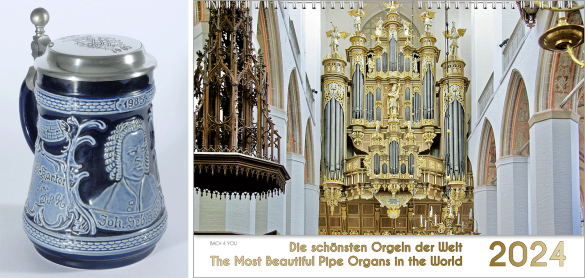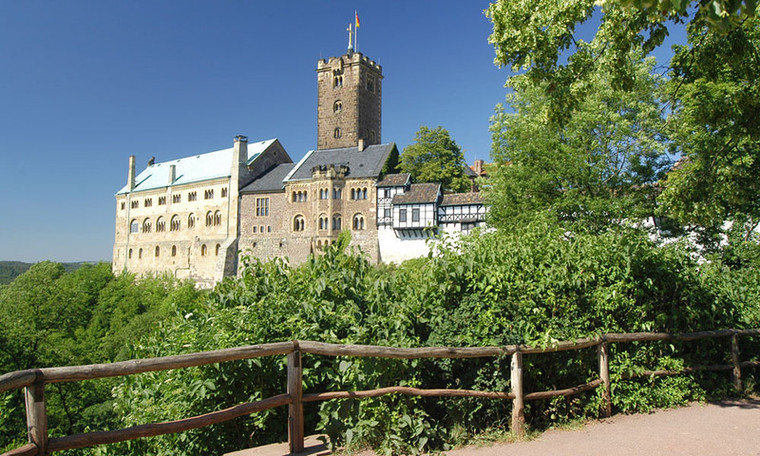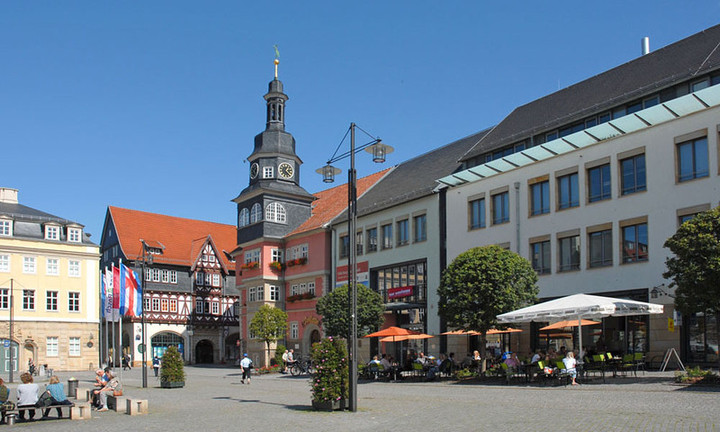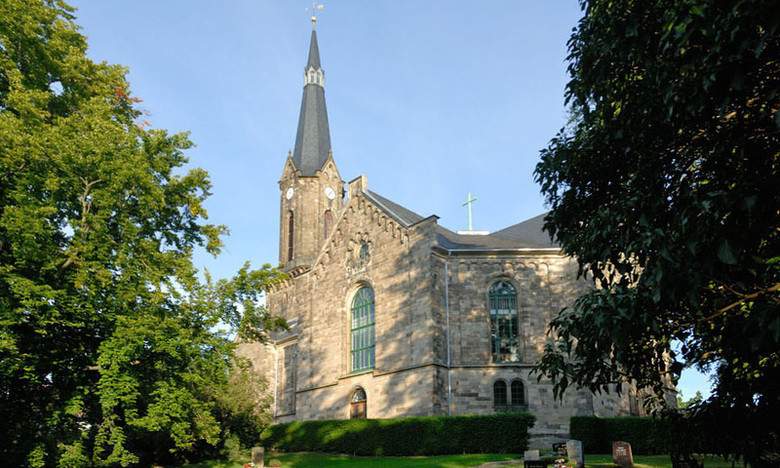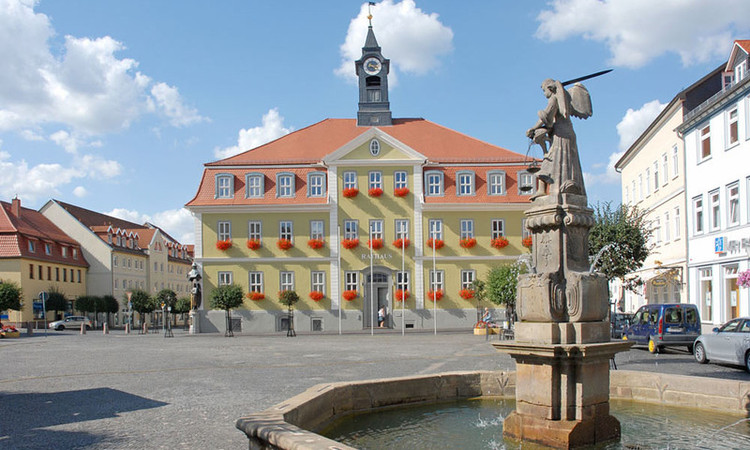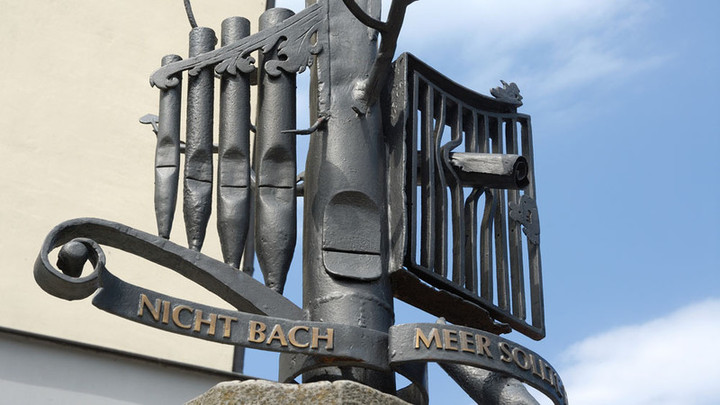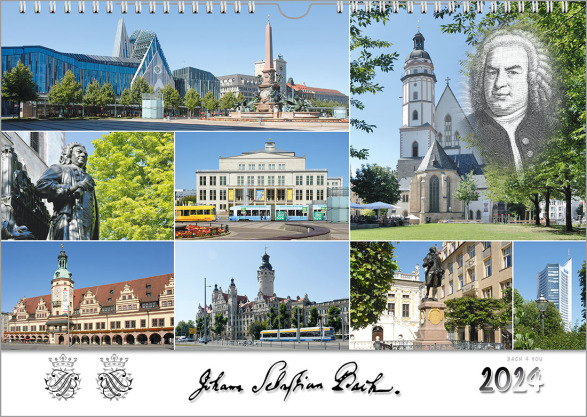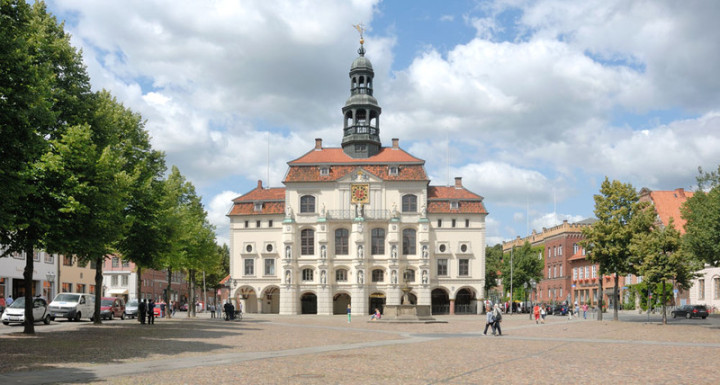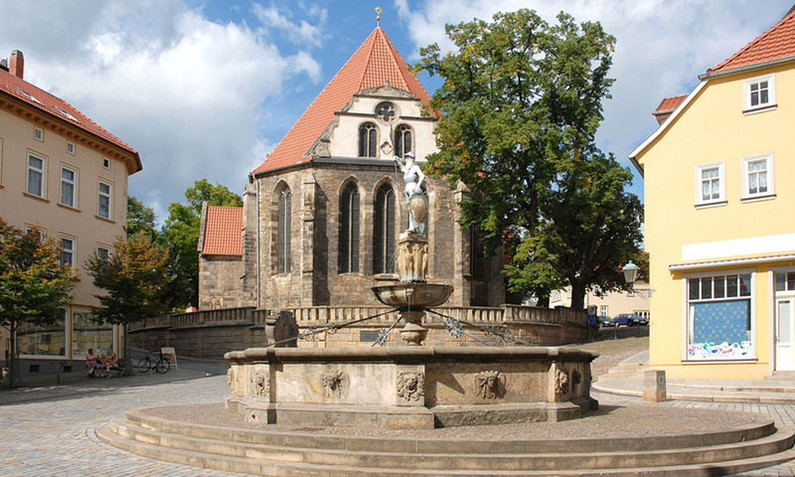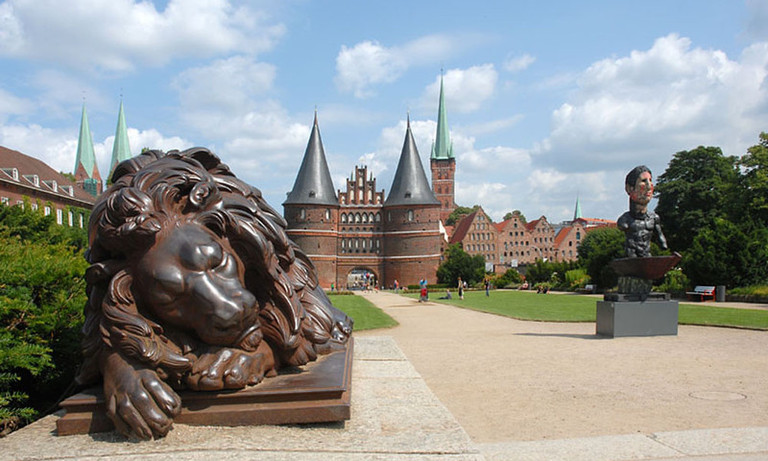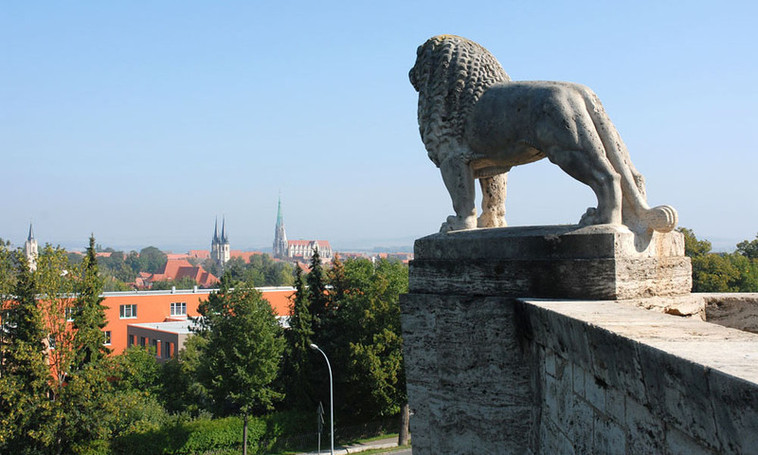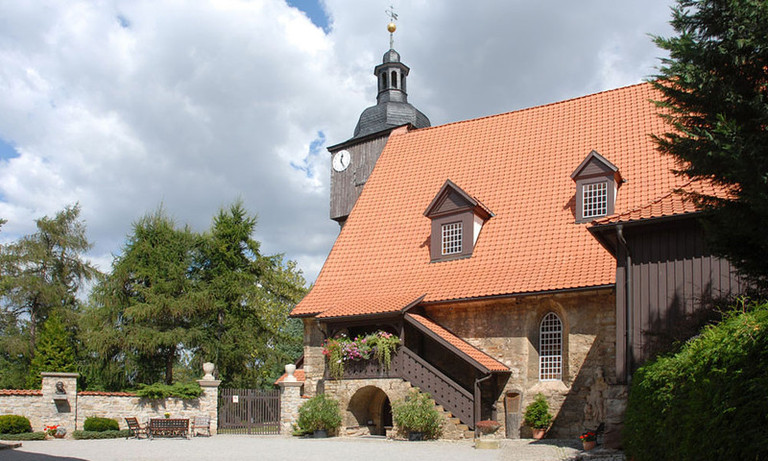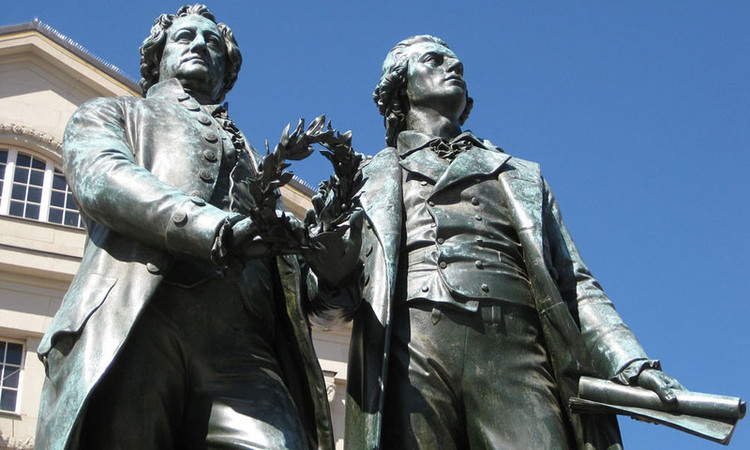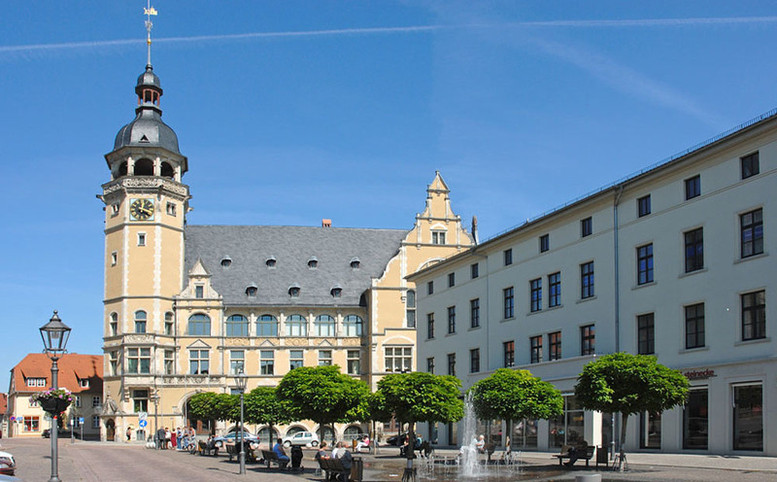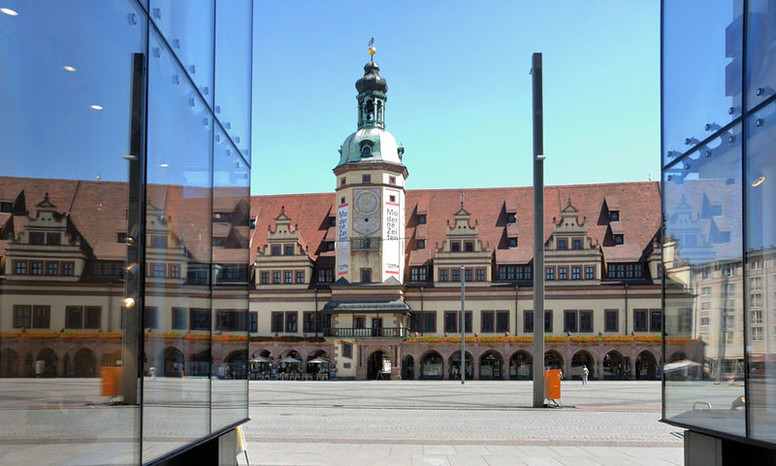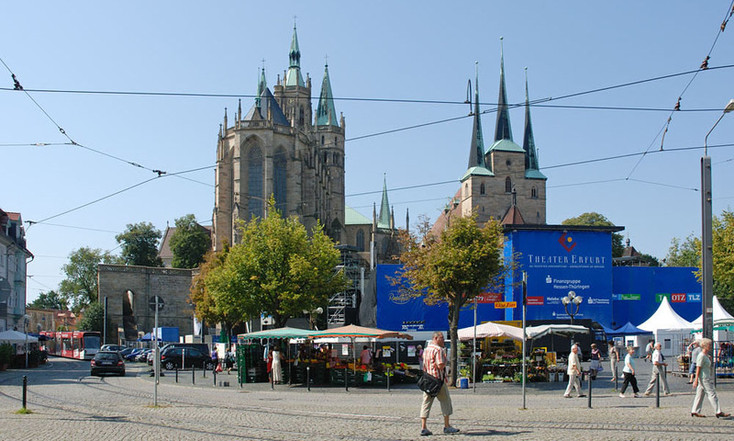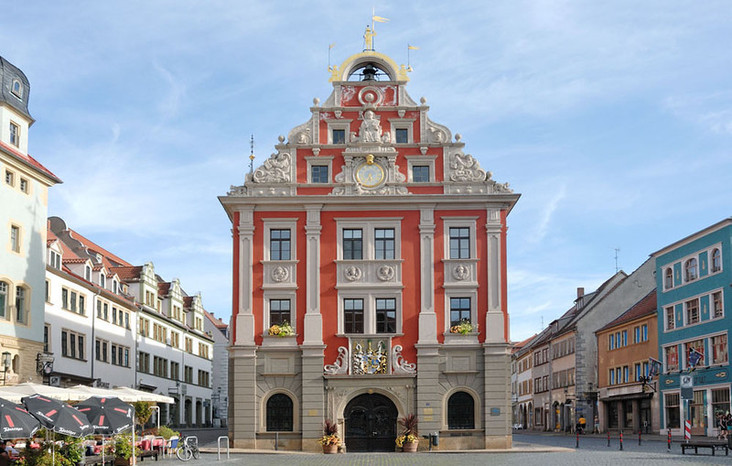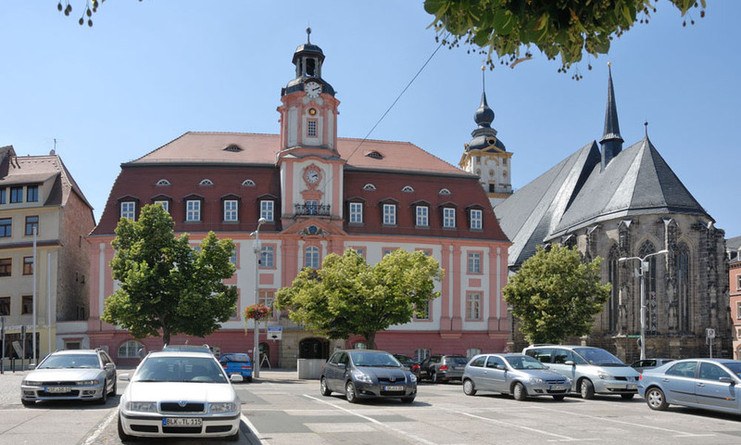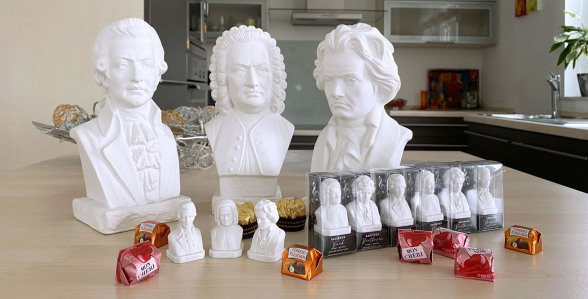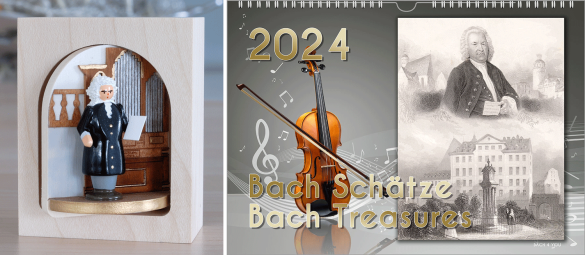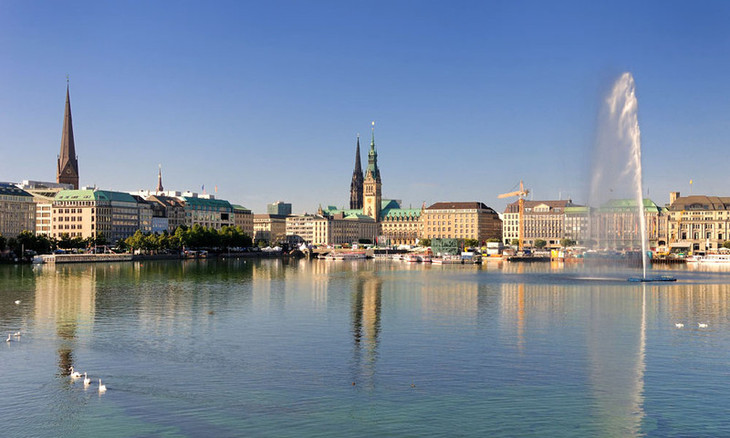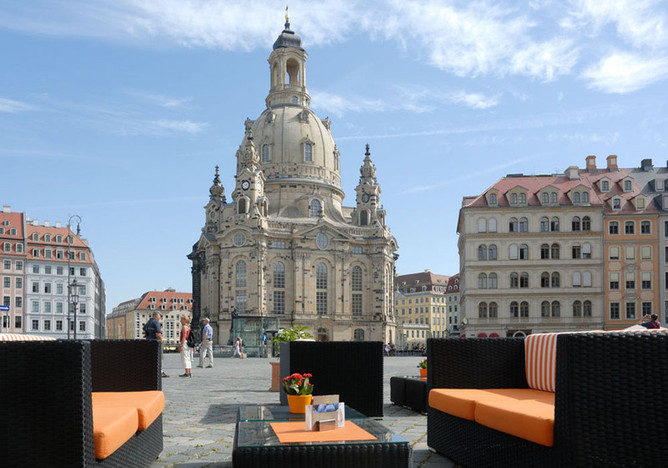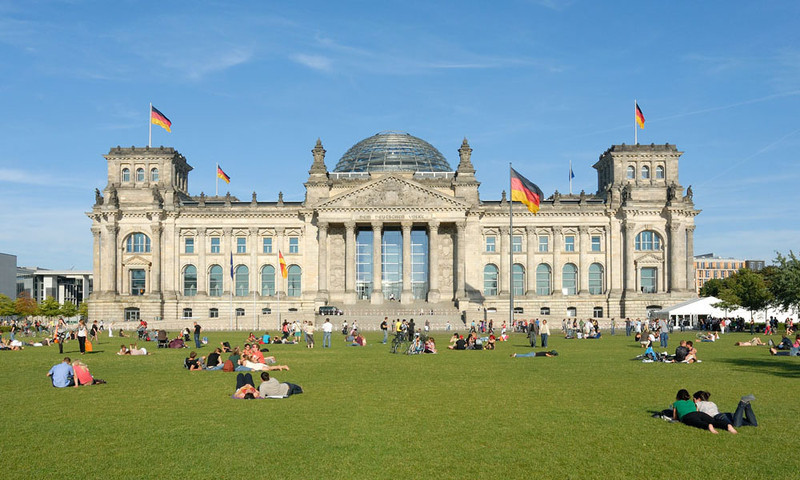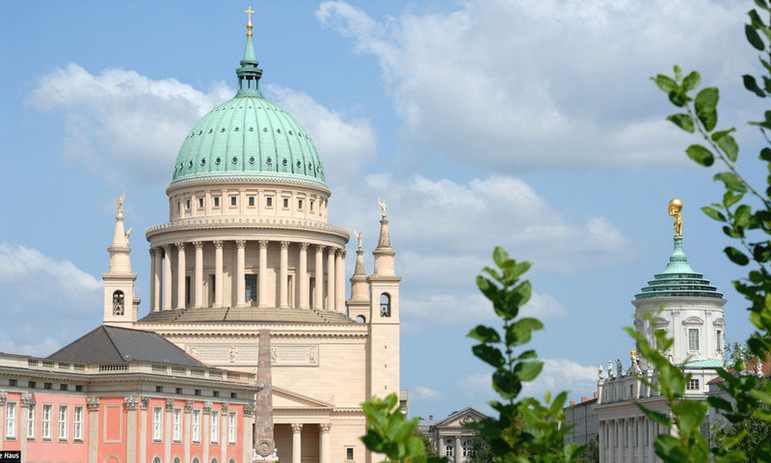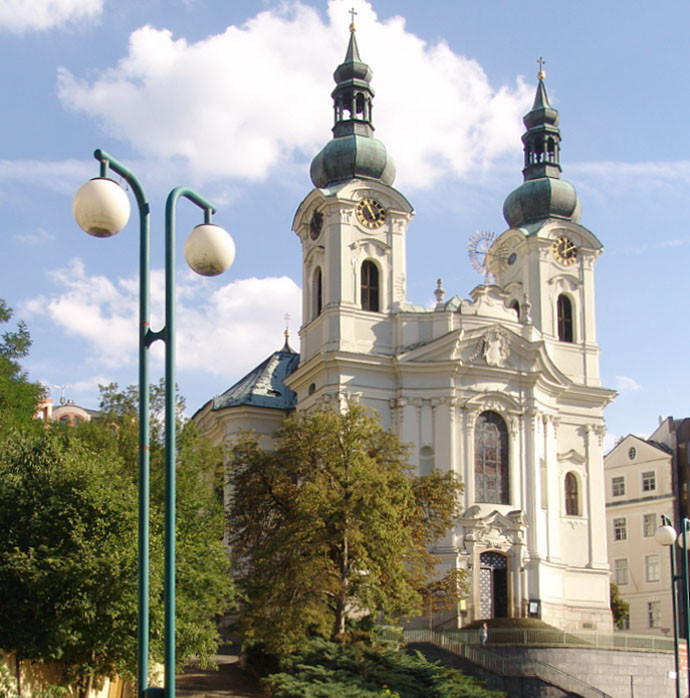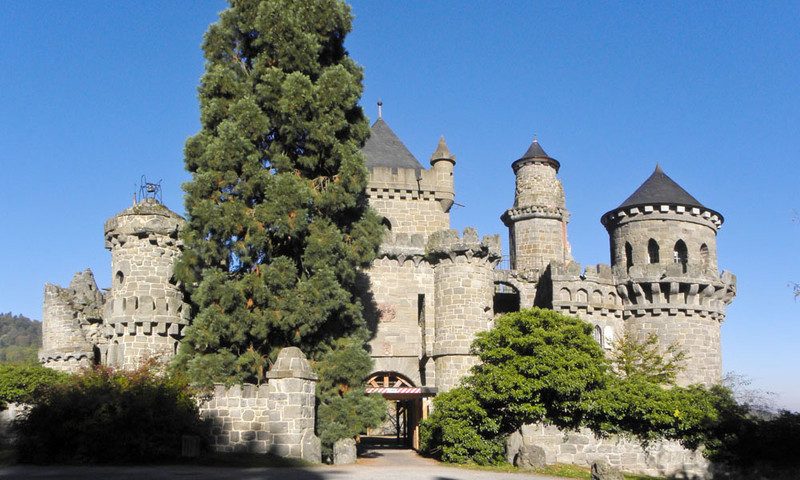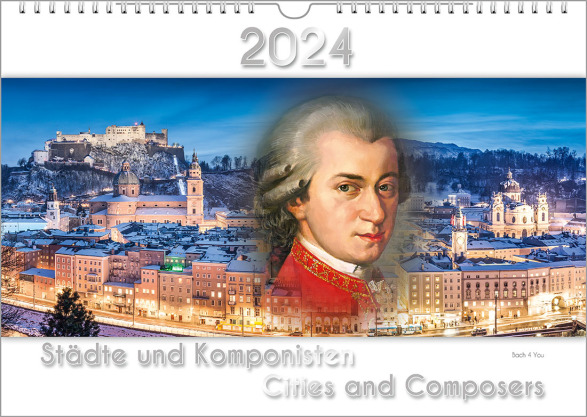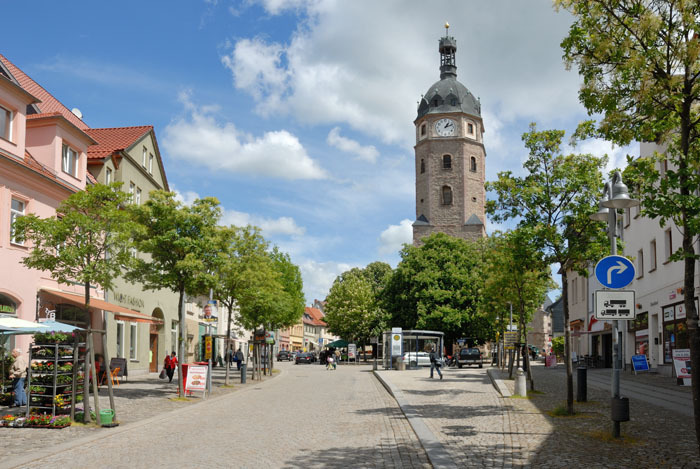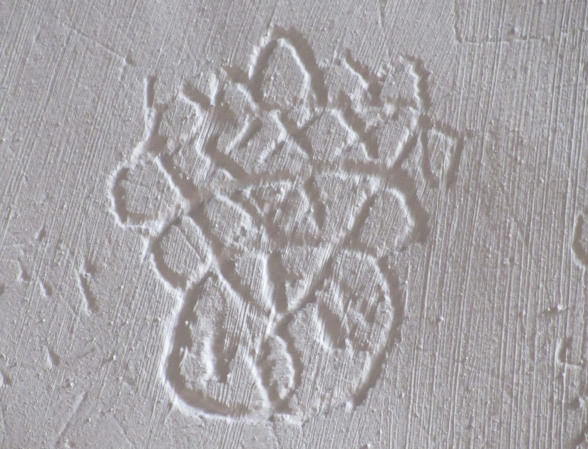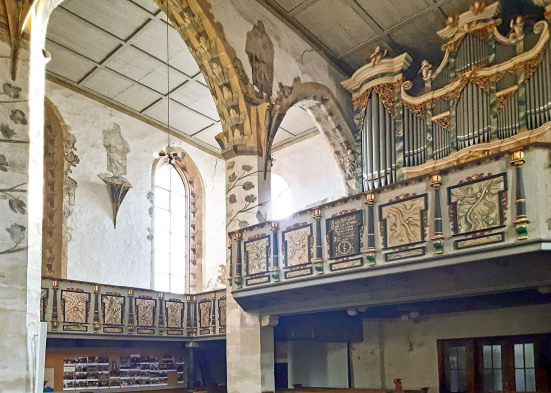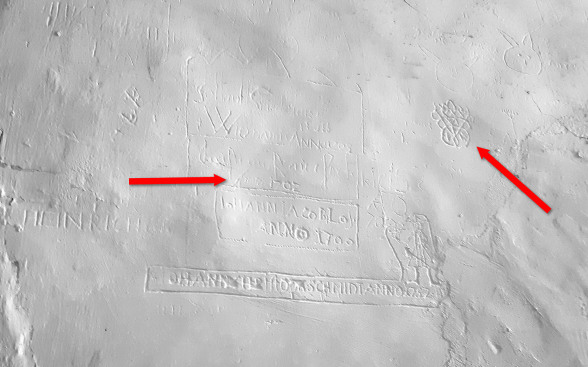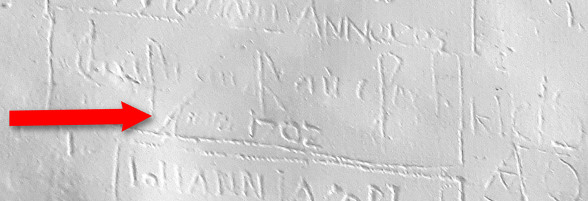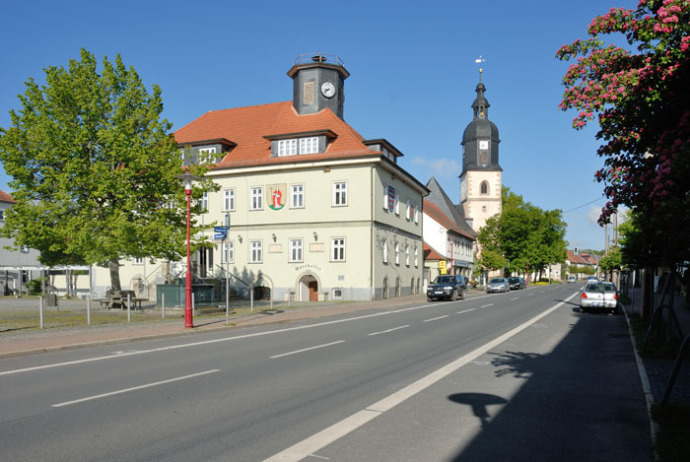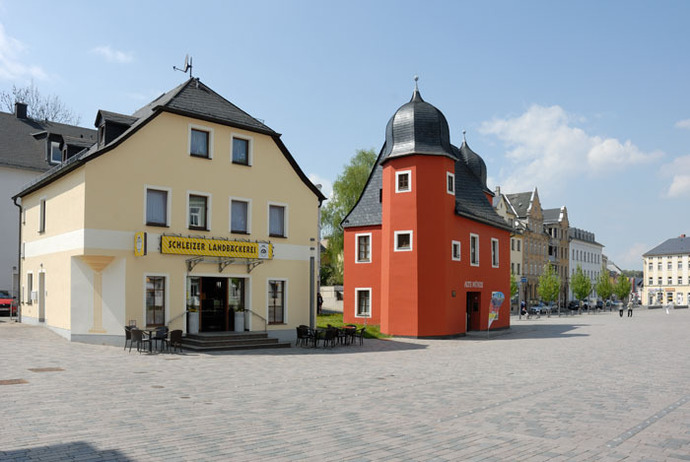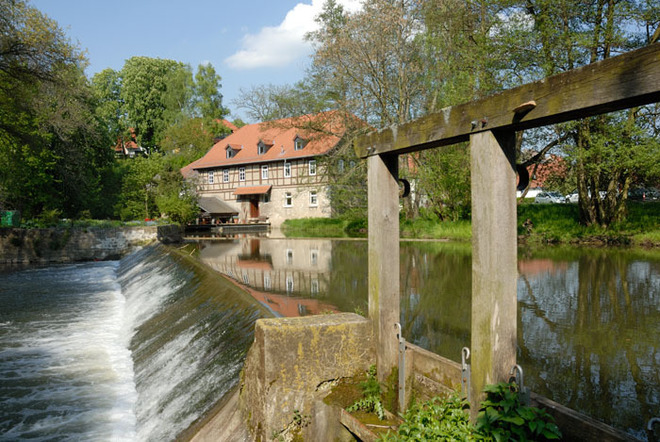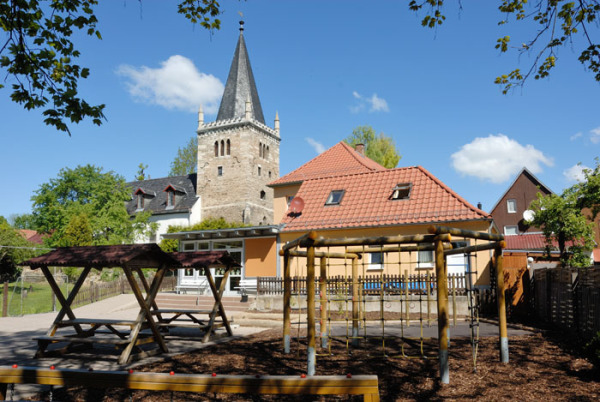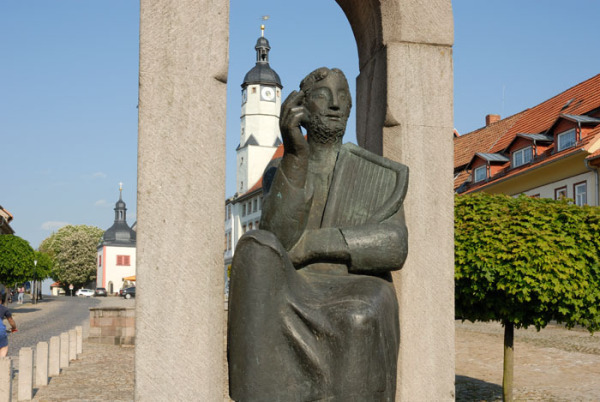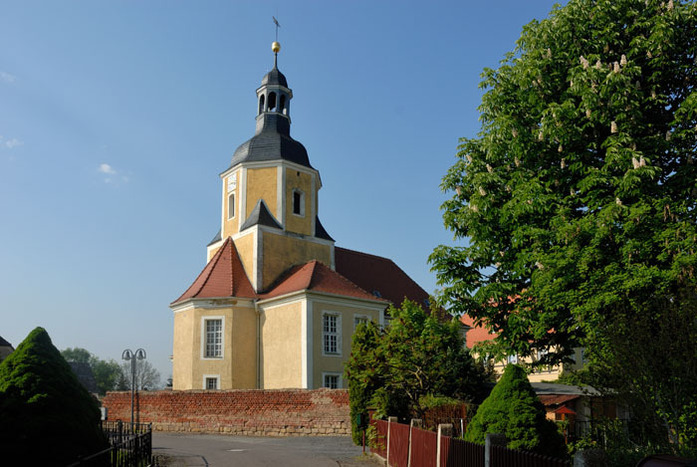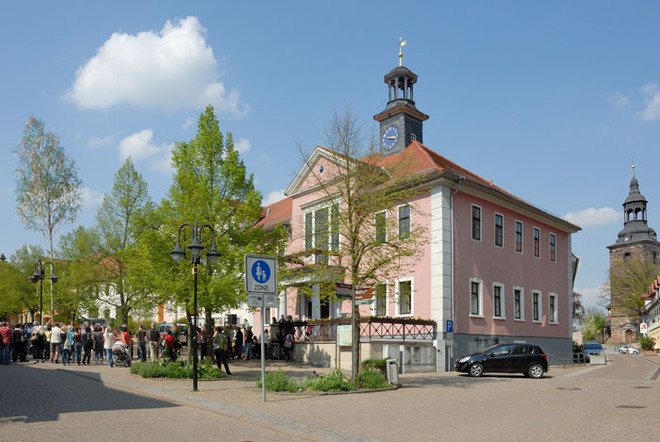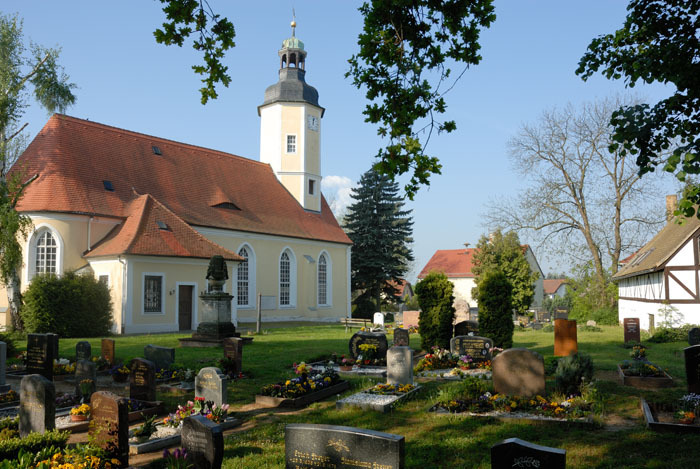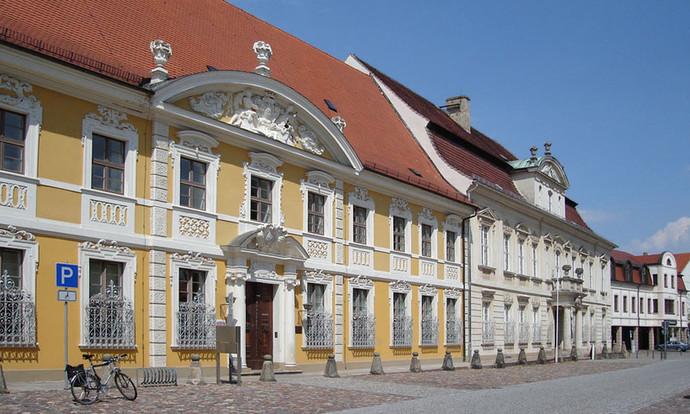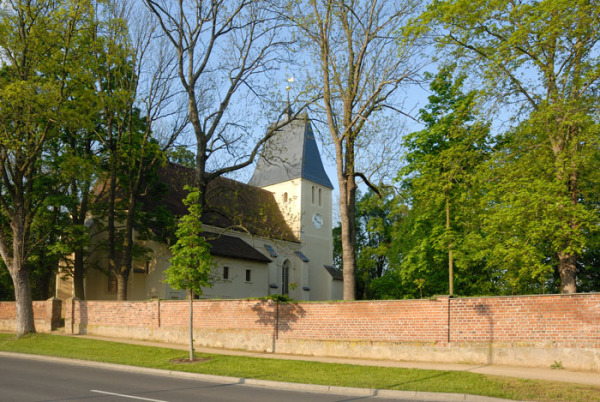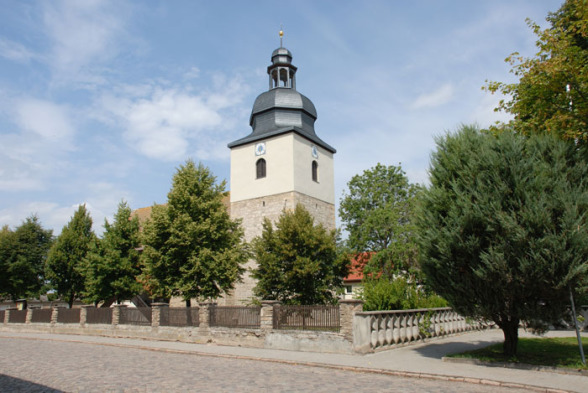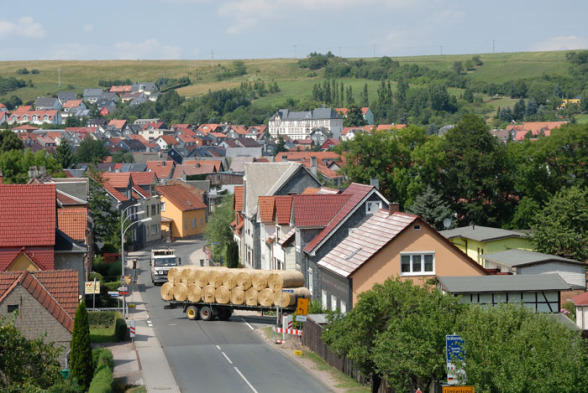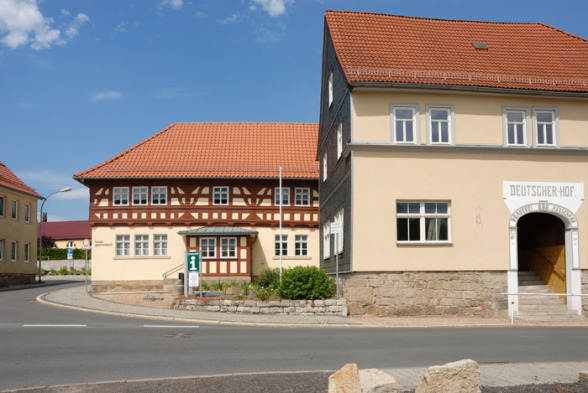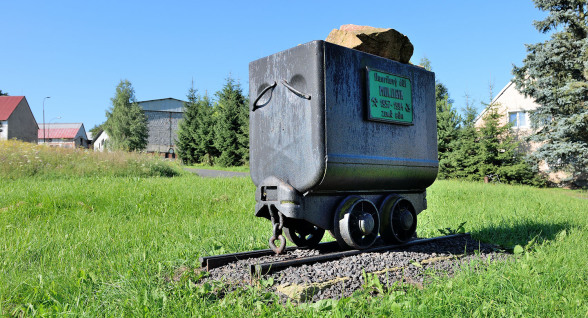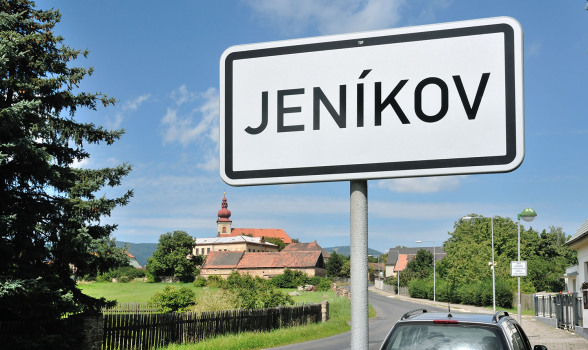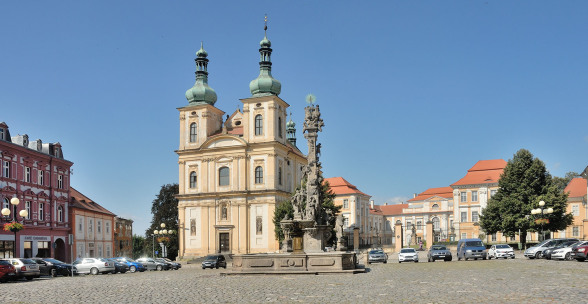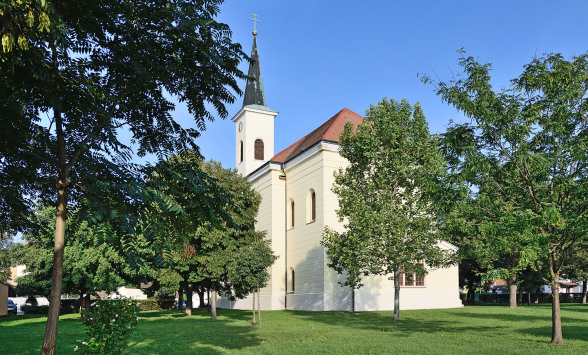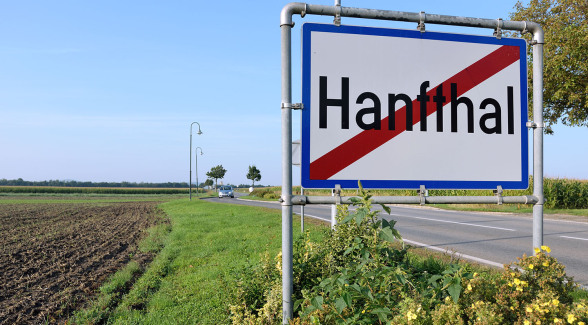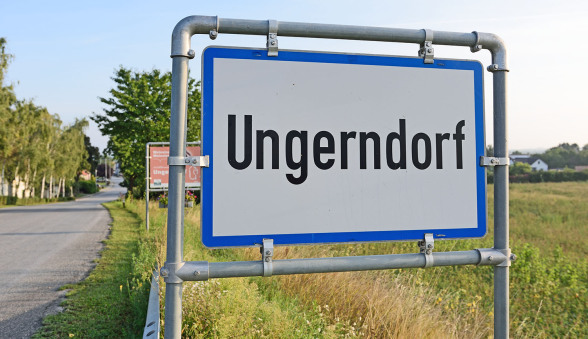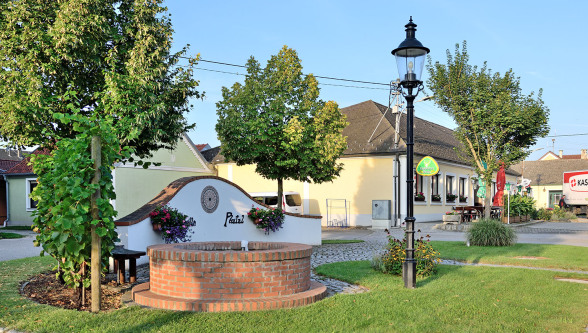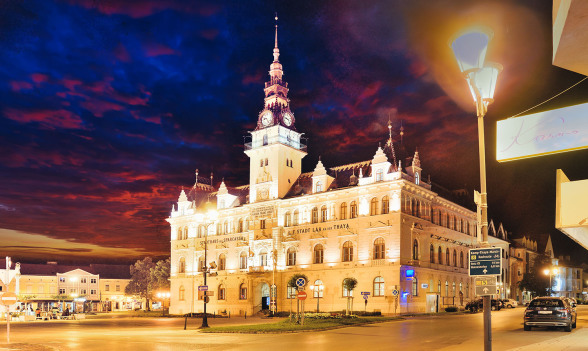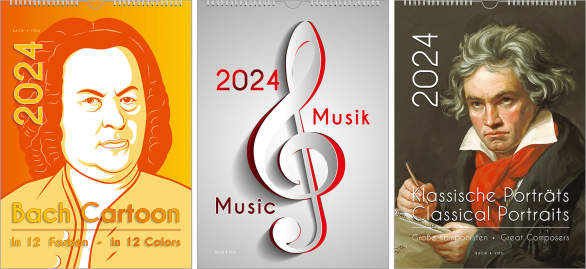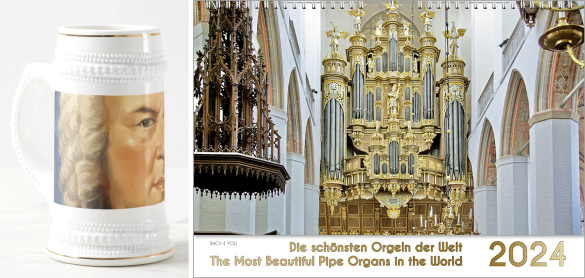
Bach Cities and Bach Places
Bach – that is first and foremost Johann Sebastian Bach. Then it is his music. Next is the family of musicians. And finally, it is about the Bach cities and Bach places. It is a number of 36. Now Bach specialists groan loudly. Some of you, who probably just wanted to have an overlook about the life of the master, do too. It is actually a total of 36 Bach places and Bach cities!
36 ... that many cities and places are related to the name of one of the most famous musicians that much, that you may call them Bach cities – or just Bach places – with a little courage. Now don't worry, that is all relative if you read down the page. And complicated ... it is unfortunately also around this topic at the periphery of my "Bach reading".
Bach Cities and Bach Places: Are There Actually 9 or 36? Or 150 or Even 300?
Bach cities, Bach locations. How many are there really? When at all is a city a Bach city and a municipality a Bach location? You can argue about that. We can even argue about it a lot. And that is what we would like to. So that this page is serious. But also remains clear. And also fulfills the wishes of those who just drop by here for a short time. But also satisfies those who set to work to "examine" this page in detail. Bach cities, Bach locations: Are there not only eight? Or maybe nine? Or about whole 36 or even 150?
Who wants to judge on Wechmar? On the Bach location Wechmar? More precisely, to the Bach Ancestral Home of Wechmar? Who wants to exclude this municipality from the ranks of the Bach locations? Where everything began. Once with Veit Bach. And with "Hans the minstrel" (... Hans, the Spielmann), his son. Nobody wants, I certainly do not want. Wechmar is ( ! ) Bach location. Oh, what do I write? It is the ( ! ) Bach location par excellence. Point. So it is, so it remains. But ... Johann Sebastian Bach was probably never in this Bach location. Does this mean that we have to classify all Bach locations and all Bach cities first? When is a city a Bach city? When is a place then a Bach location? London in England is also a Bach city ... but Johann Sebastian Bach was never there. Where does the exaggeration begin?
Advertisement
Bach Gifts and More Bach Gifts
Actually, you will find almost countless Bach gifts in the five Bach shops of "Bach 4 You" … learn more with a click here.
One Pipe Organ Calendar? No ... Several Pipe Organ Calendars ... And Yes ... Many Bach Beer Steins
One of the Bach beer steins on the left, one of the pipe organ calendars on the right. All calendars come in three sizes. US style + EU style. 2024 + 2025. To the shop.
End of Advertisement
Which Locations Do We Call Bach Cities and Which Locations Do We Call Bach Places?
Sure, there are places with very different dimensions. Berlin, as a Bach city, is a mega-metropolis. And there are other big cities like Dresden or Leipzig. And right, then there are the smaller cities. So the term "Bach city" refers to the size of the location. But there are likewise villages or municipalities with only around 2,000 residents, or more or less citizens, in which Bach "acted". These are then definitely no cities, so also therefore already no Bach cities. And because Bach villages sounds a little unattractive and also a little stupid, the smaller ones among them are for us just now ... Bach places.
There Are Two Different Variants of Bach Videos About Many Bach Cities and Bach Places
Together there are whole eleven videos on this ( ! ) Wechmar website. They are the eleven Bach Music Videos and you can find them on the next page on the left side in the navigation. But it works also more comfortable, and you just click here. Eleven Bach music videos: These are pictures that I took in these Bach cities and Bach locations and in addition there is music from the master "to your ears". But: There are also completely different Bach Videos about these Bach locations. And they are also ultra-short. The difference? These other Bach videos come with commentary text, so it's not "only" listening to one of Bach's works and watching a great photo gallery of the Bach cities and Bach locations. But you also learn the most exciting facts about these locations.
A first such Bach Cities and Bach Places Video is here on this website, on page 1. All others can be found at "Bach on Bach". And there at the presentation of the Bach locations. However, then there is another, quite exciting Bach video category with ultra-short offerings: First, there's the short biography about Bach, which is particularly suitable for children, then there's a cool little show Bach on Stamps, and finally there's a presentation of the Bach House in Eisenach. The latter is a great way to get in the mood for a visit to Eisenach. As a reward, however, there are then a few more video surprises waiting there for you to watch.
The Bach city Eisenach. In the picture the Wartburg (... Wartburg Castle ... Martin Luther and so ...). Eisenach is the "Bach city of all Bach cities". Johann Sebastian Bach was born here and, until he was just ten years old, also grew up here.
Everyone is allowed to do it the way you like. Then I'm allowed to do that too? That's how it's going to be! Bach locations and Bach cities are for me and on this website and especially in this chapter all those communities where Johann Sebastian has also been personally. At least. That means, if we "ennoble" a city to a Bach city, so to speak, and make a place a Bach place, then the Thomas Cantor must have visited it at least once. It is already borderline whether he should have done "something musical". Or whether he must have only stayed there. I am the opinion, he should have been at least in the matter of music on the way. Because otherwise we would have to make all communities, villages and cities, through which he wandered ... on his travels ... also to Bach locations and Bach cities. Probably then also Lederhose (... leather trousers). But that seems a bit exaggerated to me now. And yes ... Wechmar ... is the famous exception to the rule. And from 2023, three more locations in the Czech Republic and in Austria will become Bach locations.
The Bach city of Eisenach: the town hall there. In one minute* you can reach the Luther House from here, in another four minutes* the Bach House and the Bach Museum (* ... both values "on foot" ... and without guarantee).
Then, there are the Bach cities and the Bach locations like Gräfenroda and Erfurt. Right ... and as mentioned ... Wechmar. They are listed here because they are cities and communities that are very important for the whole Bach history. The Bach location of Wechmar is Bach Ancestral Place! The Bach city of Erfurt cannot be left out at all, with more than 60 entries regarding these Bachs of this family in the church books. And also Gotha and some other cities are "entitled" in this sense here: in the list of the Bach cities and Bach locations. Gehren is the birthplace of Bach's first wife Maria Barbara and was also the place of residence and activity of her father, Johann Michael Bach. He is also a well-known musician in the "second row" of the Bache. In almost all these cities and places Johann Sebastian Bach had also been ... but not in every place necessarily with lasting effect.
The Bach place of Wechmar. With the Saint Viti Church. Probably the first musical ( ! ) Bach got his name after her. Viti is the Latin translation of Vitus. Veit Bach. The Bach location of Wechmar is the exception to the rule in the sequence of pictures on the subject of Bach locations and Bach cities, because actually Wechmar should not be here at all: Johann Sebastian, in any case, was very probably never there. But ... nevertheless Wechmar is and remains a Bach location. And what a place it is!
Bach Cities And Bach Places ... Graded in Categories ... But First You Have to Find Them!*
You have to deal with them a little bit, search for them, catalog them and also order them a little bit. The Bach cities and Bach places in Thuringia, in Saxony-Anhalt and in Saxony, all Germany. And beyond these federal states. And even in countries in Germany's neighborhood. Only then, after a while, you get an overview. And finally also the solution, how one could catalog them.
Four categories seem to be perfect to categorize all Bach cities and Bach locations: A, B, C and D. Seriously now: There are the Bach cities, which see themselves as such because Johann Sebastian Bach lived and also worked there for quite some time. Or at least married, as in the Bach location of Dornheim on the doorstep of the wonderful and exciting Bach city of Arnstadt: That is summa summarum nine Bach cities and Bach locations (... my category A). Do you already calculate? Is it correct? Let's start with Eisenach. Then towards the brother to Ohrdruf and then up to the Bach city of Lüneburg. That makes three by the time Johann Sebastian finished school. He got his first "real" job in Arnstadt, followed by Mühlhausen, he got married in Dornheim and in Weimar he finished his stay in the Bach towns in beautiful Thuringia: That makes another four. Results in seven. And now it becomes simple. Because Bach spent the following part of his life in the Bach city of Köthen and in the Bach city in general, Leipzig. Köthen in Saxony-Anhalt, Leipzig in the state of Saxony.
* By the way, my cordial thanks go to Aryeh Oron, who contributed a lot of information to this, my chapter.
Pictures for the chapter "Bach cities and Bach places": The next photos present themselves in the further order of Johann Sebastian's stations in life in the category A. Therefore the picture above of the town center of Ohrdruf in Thuringia. In the text, however, we are already approaching category B. Consistent? No ... but ... that's me.
Bach Cities and Bach Places, Category B
This brings us to category B of Bach cities and Bach places. Bach, this name stands not only for one of the most important musicians and the most gifted organ player in the world, but also for the largest and most important musical family of all time and all over the planet. And verifiably so. These members of the "musical-Bachish Family", as Johann Sebastian Bach himself called his family, lived in certainly more than 100 to 200 cities and towns. To call them all Bach cities and Bach locations would really be nonsensical and an enormous sensationalism. But a few of them are real Bach cities or Bach places, even without the famous Thomas Cantor ever having lived there. Wechmar is such a Bach location. This category B are Bach cities – right, or Bach places – which are called so because they – partly – play an important role in the Bach Genealogy. Or because Bach was there, but did not live there, but only worked there very briefly. Erfurt is such a city: Here, there are no less than 60 entries regarding members of exactly this musical family ... that is recorded in ancient church books. We already had that above. The Bach city of Gotha and the Bach city of Weißenfels as well as Lübeck also fit into this category. Because in the category B are simply all the Bach locations and Bach cities listed, which can be connected with the musician family (... not with the individual members), without this being "pulled out by the hair". And those that simply do not fit into category A or C.
The monument to honor Bach, right next to the tower of the Michaelis Church in the Bach city of Ohrdruf. By the way, one of the real Bach cities, category A. Regarding the monument: So, who said it? Correct, Mr. Beethoven said it. You get all 66 Bach quotes with one click here.
Advertisement
The Perfect Music Gift for Birthdays and Christmas
Bach and shop are the keywords, which we ask you to remember until it is next Advent season, and you are desperately on the hunt for your Christmas gifts. Please remember the two keywords Bach and shop, and you will find "Bach 4 You" easily … learn more here.
99 Music Calendars: Pipe Organ Calendars, Composers Calendars and Bach Calendars
Bach cities, Bach places, Bach calendars: European style + US style. Three sizes. 2024 + 2025. To the shop.
End of Advertisement
Bach Cities and Bach Places, My Category C for You
And that brings us to category C. Now we can have a good debate! Are they still Bach cities at all, or have they already ceased to be so? Is it enough that Bach personally picked up instruments in Berlin that he ordered during his time in Köthen? Does this make Berlin a Bach city ... or is Berlin not a Bach city after all? Is Potsdam a Bach city just because Johann Sebastian played there for King Frederick II? Or is that alone not enough? So you can decide in each case individually: Are they Bach locations and Bach cities ... or rather not? Certainly it depends on how deeply you would like to deal with the matter. The good thing? You can simply stop reading here.
Basically, however, the question of all questions is valid in this category: Bach city or no Bach city? Bach location or no Bach location? Well ... Bach should at least have been personally present (... we already had that). And Johann Sebastian Bach should also have stayed there in terms of music. And the place should not be only a tiny village with 36 residents, in the meantime incorporated or part of a larger municipality. Of course, this village must also still exist. Thus, of about 50 Bach locations and Bach towns that could be called such, "only" about 30 remain. If you would call all cities and places Bach cities and Bach locations, which have to do only in the very broadest sense with him, then this would have to stretch also beyond the residential places of the sons and include cities like Milan in Italy and London in England. Then there would certainly be 100 to 200, if we only add the Bache in the centuries around Johann Sebastian Bach. Certainly 300 to 500 would be there, however, if we would make Bach cities or Bach locations out of all locations, in which a family member of the Bache was ever to be found ... or still is. And that would really be pure nonsense.
Clearly a Bach city: Lüneburg. Only we don't find a monument there and as a Bach city it is somehow different from the Bach places in Thuringia, Saxony-Anhalt and Saxony. Nevertheless: Bach lived there, and he worked there – and of both – really not too scarce. ––
The Bach city of Arnstadt. The favorite Bach city of the author of this page (... so my favorite Bach city). Sure, of course near Wechmar. I see you smiling! If you visit Arnstadt, you should not miss the Bach place of Dornheim at all. It's a detour of just a minute's drive on the way back from Arnstadt to the autobahn. And a parking space, there is one for you in Dornheim ... actually always. A 20-second walk from the Bach Ancestral Home.
The Bach City of Lübeck. If Johann Sebastian Bach vacationed in this dream city for so long, then it simply must be a Bach city! Whether it is a Bach city in category A or a Bach city in category B? You are welcome to decide that for yourself.
The Bach city of Mühlhausen. Also, one of the "real" Bach cities. Category A. But he didn't stay there for long. Johann Sebastian Bach. In Mühlhausen.
Not a Bach city: Dornheim. Dornheim is not only too small for that, but much too small! Dornheim is likeable and is a Bach place. Or, if you like that better, a Bach community. Whoever visits Arnstadt and "misses" the wedding church with the Bach monument in Dornheim, now has no excuse in the future. Because this is only a five-minute drive from Arnstadt, city center, and you know that now.
The final of the pictures of the Bach cities in Thuringia is Weimar. What a city, what a Bach city! And perhaps someday in Weimar, in this Bach city of Bach cities, there will also be a museum on the subject. Or something similar. Who knows for sure? Weimar causes problems: problems to put it in any order. For Bach was in Weimar even twice in his life. But the first phase was so short that we would like to let it "fall under the table". He made music for Duke Ernst, very briefly ... but later all the longer. Many Bach biographies do not even mention this first stay in the Bach city ... but we do. But only ... a little. Oh yes, of course none of these two gentlemen in the picture above is Johann Sebastian. If you are interested in who these two friends are ... You know what to do.
The Bach city of Köthen. The first of two places of activity in the musician's career outside Thuringia. Here Johann Sebastian Bach experienced paradise and trauma at the same time. While he himself said that he could well imagine living in Köthen until the end of his days (... this is not the wording now ...), nothing is known of such statements about any other Bach city. However, his first wife Maria Barbara also died in Köthen, completely unexpectedly.
The music metropolis of Leipzig. In general: the ( ! ) Bach city. The Bach city of all Bach cities! Johann Sebastian lived and worked here for 27 years, suffered endlessly and composed wonderful music. He died here in 1750 and is buried in the Saint Thomas Church today.
Now it would be a very incomplete page covering the Bach cities and Bach locations if they were not all listed. And that with pictures. Here. Now. Yes, all of them! Even those in the categories B and C and D. And even if this page is not intended to satisfy you completely, but rather to interest you in this topic, at least – briefly and concisely – these very Bach cities or Bach locations should "whet your appetite" with one picture. You remember ...
... "in the broadest sense" ... these are in category B: Erfurt, Gotha, Lübeck and Weißenfels. And in category C they are, not in alphabetical order and not otherwise: Hamburg, Berlin, Potsdam, Dresden, Sangerhausen, Kassel, Ammern, Karlovy Vary (Czech Republic), Langewiesen, Schleitz, Taubach, Weißensee, Wiederau, Bad Berka, Störmthal, Zerbst and Zschortau. For each location there is a picture below. For category D please let us surprise you.
Right, you can get much more information about all nine of the Bach cities and Bach locations that have to do with the life and work of the Thomas Cantor from me in a completely different place on the internet, but in exactly the same style: relaxed text and great photos, videos, and now and then also serious information. Just never too little fun and never completely serious. Click here, for example, and you'll find interesting facts about many Bach cities and Bach locations ... and much more, really much more pictures! Feel free to click all the way to "Bach on Bach", with around "1,000 pages about Bach", hundreds of videos and very soon over 2,000 pictures.
26 Bach Cities and Twelve Bach Places
The Bach city of Erfurt is the location where more than 60 members of the Bach family are mentioned in the church records. For this reason: Honor to whom honor is due. You may even discover my ultra-short Erfurt video about this Bach city on "Bach on Bach" (... scroll down the page a bit after clicking here).
A dream of a city and then also a Bach city: Gotha. Not only "Hans the minstrel" played here, but also at least once his great-grandson Johann Sebastian Bach. And on the doorstep, barely five minutes by car: the Bach location Wechmar. Then Gotha is also extraordinarily beautiful and worth a visit. And because I owe so much genealogical background to the present Chief Mayor Knut Kreuch ... and we all have him to thank him for the fact that the Bach mill was not demolished, I "solemnly" elevate Gotha to a Bach city of in the category B.
The probably best known Bach city Bach fans in the category B of Bach cities and Bach locations: Weißenfels. Here, Johann Sebastian Bach was advisor to the princely court orchestra, and he was proud of the title associated with it.
Advertisement
99 Music Calendars, Composers Calendars and Bach Calendars
From really big to really small ... these are the composer busts from "Bach 4 You". You get to the shop below the next picture.
Bach calendars are music gifts. Three sizes. European style + US style. 2024 + 2025. By the way ... on the left it's the Bach Drehkastl (... the Little Bach Turning Box). To the shop.
End of Advertisement
The Bach City of Hamburg. Hamburg almost became a "real" Bach city. But paying money for a job was not Bach's cup of tea.
The Bach city of Dresden. Where Marchand once "escaped ". And left Bach the victory in what was certainly one of the first music contests entirely without a fight.
Of course, Berlin is a Bach city, because this is not "only" where the Kapellmeister (... Band Director) Johann Sebastian Bach ordered and picked up musical instruments.
Potsdam, what a city! Of course Potsdam is a Bach city, as two really extraordinary personalities met right here. Actually, it had been three. As Bach's son Carl Philipp Emanuel Bach was present at that meeting as well.
Thank You, Aryeh Oron: There Are More Bach Cities and Many More Bach Places
However: To take perfect photos matching all the locations above and below on this page, I'll probably have to visit one or the other location again. In the "Land of the Bache" and maybe a little further. Of course, for that to happen, all the trees have to have leaves on them, the days have to be longer, the fog less, and the weather has to be nice for many, many hours a day. The best time for this is late spring. Then I will tackle that, and soon I will be able to present you exclusively my photos here. Until then, some, very few pictures are not yet mine. Most of them however ... already.
Until then, I may use these few photos that are included in the contributions to Wikipedia according to the rules of the Common Licence. The authors are listed in the imprint (... "Copyrights") and so everything is correct. Thanks to the photographers for this kindness to be allowed to publish their beautiful photos. Have fun now with my selection of photos for you.
Of course, Karlovy Vary in the Czech Republic is Bach city. Johann Sebastian Bach accompanied the Prince of Köthen to this location on his travels.
Kassel is a Bach city, because Johann Sebastian Bach travelled to Kassel in 1732, to examine the newly built organ in the Saint Michaelis Church.
Advertisement
99 Music Calendars: Pipe Organ Calendars, Composers Calendars and Bach Calendars
Composers calendars are gifts for musicians. European style + US style. Three sizes. 2024 + 2025. To the shop.
End of Advertisement
Sangerhausen is one of the Bach cities in Saxony-Anhalt. It was here that Johann Sebastian Bach applied for his first job in the year 1702 and almost got it.
Sangerhausen is something special among the Bach cities. Well ... what is special in Sangerhausen? Around eleven years after this website about Wechmar was created, my request on one of my genealogy pages in the Bach project and for another Bach fan with her joy about my so special Bach offer led to two "Bach super finds". To no sensation for the lovers of Johann Sebastian Bach's dreamlike music. Maybe also not even for people who are interested – beyond his music – in his life. But certainly for all who are excited to learn more around this Thomas Cantor. So ... what is it? The first sensation resulted when Michael Lehner from Laa on the Thaya in the Austrian Weinviertel (... Wine Quarter) emailed me ... with it the early Genealogy of the Bache was finally clarified after 270 years.
The second discovery was contributed by Church Music Director Martina Pohl, who – among many other things – plays the famous Hildebrandt Pipe Organ in the beautiful Saint Jacobi Church in Sangerhausen. In fact, she discovered that among various carve drawings in her church there is a display that reminded her much of Johann Sebastian Bach's seal. And what's even more: Very close by, the year 1702 is also carved into the church wall there. This raised the question for her: Was it him or wasn't it him? Was it the master who immortalized himself there? Of course, Martina Pohl attached a picture of this carving to her mail for me ... and what can I say? I ( ! ) ... am absolutely convinced of the authenticity. Why?
My very special thanks for her interest in my Bach reading offer, and thus of course also for her hint to me, goes to Mrs. Martina Pohl, Director of Church Music in Sangerhausen. Without her interest in the subject of Johann Sebastian Bach and at the same time in my publications, Bach's first draft of his family seal might have been "lost" again ... and then never "reappeared" ever. What a find and how cool that Martina Pohl contacted me. © KMD M. Pohl
This photo was taken by Martina Pohl especially for me at my request. To the left of the Hildebrandt Pipe Organ, you can see the white wall surface excellently and recognize ... nothing at all. And this is exactly what I wanted to document: From the lower level of the church, you have no idea at all that something so exciting is waiting there for a particularly attentive Bach fan. Even more: Even if you stand directly in front of this wall, you do not suspect that among several also younger plus several historical carvings and dates one work is a very special ... if the light is not ideal. © KMD M. Pohl
Do you see the word "Anno"? Certainly not without this, my hint. But what you can recognize well, if you are not currently "underway on your smartphone", is the year 1702. The difference in recognizability makes it clear why both "documents" could "hide" for so long: Over 300 years. © KMD M. Pohl
Yes ... the "Anno" is a challenge in the previous image, even on the PC. Therefore, here again an enlargement. Very weakly this "Anno" can be seen, but the year is now clearly visible. © KMD M. Pohl
One of the Bach places is Langewiesen in Thuringia. Johann Sebastian Bach inspected the organ in the Liebfrauenkirche.
The Bach place of Schleiz. In his time as the Köthen band leader Johann Sebastian Bach traveled to the court of the sovereign there for a guest audience.
This is definitely no Bach city, but a Bach place. In Taubach there are some 1,100 residents living and that is ... not before today. Johann Sebastian Bach made a trip to that Bach location, when he was expecting the organ, which was newly built by court organ builder Heinrich Nicolaus Trebs in the year 1710.
Ammern, a suburb of Mühlhausen, is one of the Bach locations and lies a bit north of Mühlhausen. I found not a single photo on the internet. Since the year 2014, however, there is finally a good picture ... finally for you from me.
A nice fountain in the small Bach place of Weißensee. In 1737, Johann Sebastian Bach expected the new organ at Weißensee, which was built by C. W. Schäfer.
The Bach location of Wiederau near Leipzig, with 400 residents today, is one of the very smallest Bach places. It was here that Johann Sebastian Bach composed a cantata entitled "Angenehmes Wiederau, freue dich in deinen Auen" in 1737.
The Bach place of Bad Berka, some six miles away from Weimar. Here too Johann Sebastian Bach inspected a newly built organ. He personally cooperated in the planning.
Is Störmthal a Bach city? No, because it is too small. It's no city at all. But it's a Bach place, a Bach village. Today 500 residents are living there. Here, 1722 until 1723 Zacharias Hildebrand built the new organ in the Kreuzkirche and Johann Sebastian Bach inspected it after the finishing.
The Bach city of Zerbst. With such a destination, a photo tour is a special pleasure! In Zerbst Johann Sebastian made music in 1732 for the birthday of Prince Johann August of Anhalt-Zerbst.
The Bach location of Zschortau: It forms the conclusion of the 33 Bach cities and Bach locations in the categories A, B and also C. In 1746, which is "exactly about" 280 years ago, Johann Sebastian Bach also checked the newly built organ in the Nikolai Church here.
Bach Cities and Bach Places, Category D ... With Four Surprises for People Interested in Bach Genealogy
Of course, Bach specialists have known about the Bach locations in categories A to C for generations and many decades. That Erfurt is the epicenter of the Bach family is certainly also known. But the fact that Andisleben is a Bach place surprised even the mayor there. Yup, we simply "ennobled" this community to a Bach location. Because Andisleben plays a decisive role for us and for some Bachs in America, too. In the search for their roots: In fact, Bache once emigrated from Andisleben to the USA.
What only very few Bach fans know, however, is that Gräfenroda has also been an official "Bach location" since 2015. This is because the earliest reliably identifiable ancestor of the Bachs, Hans Bach, lived here when they were not yet making music. From here, his son Hans Veit Bach immigrated to what is now the Czech Republic. And he made Janegg near Duchzow, close to the present border, a Bach location. Janegg is situated in an area that used to be called Ungernland. The emphasis is on the " e ": It is not ( ! ) the almost everywhere and always wrongly listed Hungary as the country of origin of the Bach family. In Janegg – documented – Hans Veit's son Veit was born. In our publications we call him "Veit the Elder". Because two historical documents about a Veit list him at different places at the same time, there must have been a second Bach with the name Veit: It is Veit the Younger, who was born sometime, somewhere, and lived in Hanfthal and later in Ungerndorf near Laa on the Thaya in the Weinviertel (... Wine Quarter) region of Austria, only a thirty-minute walk from there, very close to what is now the border with the Czech Republic. From there he eventually migrated back to his family's homeland and ... "dives up there" ... when he had to escape because of the Lutheran religion from Ungern ... for us today and for around 400 years ago.
The Bach location of Andisleben in Thuringia near Erfurt. Andisleben is actually only really exciting for our American Bachs. And for us two Bachs. That, however: very special!
A small place in Thuringia is already mentioned in Forkel's biography: Gräfenroda. Does this reference alone already make it a Bach place in category D? No, there are much more exciting things!
From Gräfenroda in Thuringia (... from Gräfenroda I even have two photos for you) Hans Veit Bach immigrated to the Czech Republic. In Czechia son Veit was born. We call him "Veit the Elder" in the Bach genealogy . Also in Janegg near Duchzow the Bachs were not yet a musical family. In the tiny spot "Moldava" (... in the picture below) the Bachs were settled before that. To today's border it is only ten minutes ... on foot.
Moldova, it really doesn't get any closer to the German-Czech border. By the way, there's almost nothing more to photograph there.
A suburb of Duchzow is Janegg (... Jeníkov u Duchcova, as it is called there). There is not much to explore there either. However: In this tiny village Bach history really takes place. Veit Bach was born here. But not the Veit, who is later listed in the "Origin" (... the "Ursprung"). But his father.
Duchcov on the border between Germany and the Czech Republic. This is how it looks there: I photographed it for you.
Hanfthal in Austria, one minute's walk from Laa on the Thaya in the Weinviertel (... Wine Quarter), in the very north of Austria. This is where Vitus the Elder or Vitus the Younger moved: We will never know which one. We only know that there were two "Veits".
In a historical document it is reported about Veit Bach from Hanfthal. Ungerndorf is 30 minutes walk away. And the "Origin" (... "Ursprung") reports about a Veit Bach who had to escape from Ungern. So Veit Bach must have lived first in Hanfthal, then in Ungerndorf, formerly also shortened to Ungern. Hanfthal is a suburb of the beautiful city of Laa on the Thaya.
Ungerndorf. There is not much to explore there, but the village center is well worth a photo (... below this text). Six years after I had asked on my website to contact me for exciting and new things regarding the early genealogy, a night watchman contacted me. It is the night watchman (... today for tourists) of Laa on the Thaya in Austria, Michael Lehner. He sent me unbelievable documents, which finally answered the 270 years lasting question about the "where from" of the Bach family. Also, Ungerndorf belongs today to the city of Laa.
Ungerndorf: Now, finally, it becomes clear that in the "Ursprung" actually Ungern is spoken of. In fact, Johann Sebastian Bach reported in this "Ursprung" that Veit (Vitus) had to escape from Ungern ... and not from Hungary (... which is Ungarn with an " a " in German).
The conclusion to the theme of all Bach cities and Bach locations is a photo of the town hall of the municipality of Laa on the Thaya in Austria.
Advertisement
Almost Uncountable Music Gifts, Almost Uncountable Bach Gifts
Thousands of music gifts.
Music Calendars, Composers Calendars, Pipe Organ Calendars, and Bach Calendars
One of many actual Bach beer steins ... and the pipe organ calendar (... again ...) on the right side. Calendars come in three sizes and in two styles. 2024 + 2025. To the shop.
End of Advertisement

